Near the suburbs where I grew up, 30 miles north of the Mexican border, there is a narrow 7-mile strip of nature preserve called Los Peñasquitos Canyon Preserve. A creek runs through a shady valley, and on the canyon ridges centuries-old oaks bump up against 30-year old housing developments. This is a place of transition.
There are the seasonal shifts, and slow fluctuations in terrain, and evidence of changing inhabitants. Archeological artifacts dating back 7,000 years have been found here, remnants of the Kumeyaay and the La Jolla people before them. This territory was the first land grant from Mexico to California, and the adobe ranch house from 1815 still offers tours, and hayrides on Halloween.
The craving to dive off the cliff face into the sea to taste the edge of earth, air and water.
The trail starts from the desert-like canyons of Rancho Penasquitos and lands hikers at the ocean, meandering through grasslands, chaparral, sycamore groves and freshwater marsh. Growing up here, surrounded by concrete, asphalt, box stores and lawns, it was the best place to go to get good and dusty. But if you pretend for a moment to be in the wilderness, the subtle stench of a sewage pipe beneath the scent of sage and yarrow reminds you you’re only at the edge of your own backyard.
Thanks to the San Diego Sustainable Living Institute course on permaculture design, we at Terra Cultura have been thinking a lot about the ecological concept of edge effect. One of the many principles of permaculture design, this idea describes the greater diversity in a region that is a transitional boundary between two adjacent ecosystems. We’ve been contemplating the places where the boundaries of our lives converge to maximize diversity and abundance.
There are the natural borders of geography–mountains, deserts, waterways etc.–and the human constructed lines dividing states and nations. Many of the best things exist on edges: the food and festivals on the borders where two cultures coalesce, the place where a meadow meets a forest, or where a creek confronts a precipice and slices off on the edge of a waterfall. A clothesline with its flags of domesticity splits a yard where a wild canyon rises up against a fenced-in lawn. The craving to dive off the cliff face into the sea to taste the edge of earth, air and water. The thrill and frustration of a mind pushing against a new perspective. The friction of conflict we crave from literature, theater and film.
Without monsters and gods, art cannot enact a drama

Mark Rothko. Untitled (Black on Gray) (1969/70)
We can follow the idea of edges into a painting where they define a form or a tonal shift. Mark Rothko’s interest in mythology influenced his exploration of form, space, color and contrast in his paintings. He wrote, “without monsters and gods, art cannot enact a drama”. An edge region is revealed through his depiction of the confrontation between monsters, gods, and man. In his Untitled (Black on Gray) (1969/70) a white border extenuates the tension where the black and gray meet. More than depicting the boundary of two fields of color, Rothko was interested in relieving modern society’s spiritual emptiness through the expression of tragedy. This white border exemplifies edge effect. It is neither just black, nor just gray, but some of each, with a new color specifically adapted for the border region where the two fields conjoin. Though the painting may have dark implications, the white border suggests the redemption and catharsis that is possible through the drama of tragedy.
From the edges that outline text on a page turning abstract marks into meaning, to the inner edges of our perceptions, to the borders and frontiers of our landscapes, wherever two different realms come together, things get more interesting. We see the characteristics and inhabitants of two regions overlap and coexist, mingled with the emergence of unique qualities adapted for the border spaces. We see the liminality of these thresholds, the blurring of our anticipated expectations, and emergence of unexpected confluences.
Gary Snyder writes in Practice of the Wild that, “Our philosophies, world religions, and histories are biased towards uniformity, universality, and centralization–in a word, the ideology of monotheism.” In a world where we are losing many of our most interesting edges of culture, language and land, permaculture seeks to integrate design methods that maximize edge, thereby increasing diversity, productivity and abundance.
We talk about Terra Cultura as an intersection where agriculture, art and community converge. Within each of these intersecting spheres, we also hope to maximize edge effect. Whether it’s an unexpected collaboration between two creative mediums, or a garden planted in a spiral labyrinth rather than rows, we look forward to being edgy with you.


0 Comments